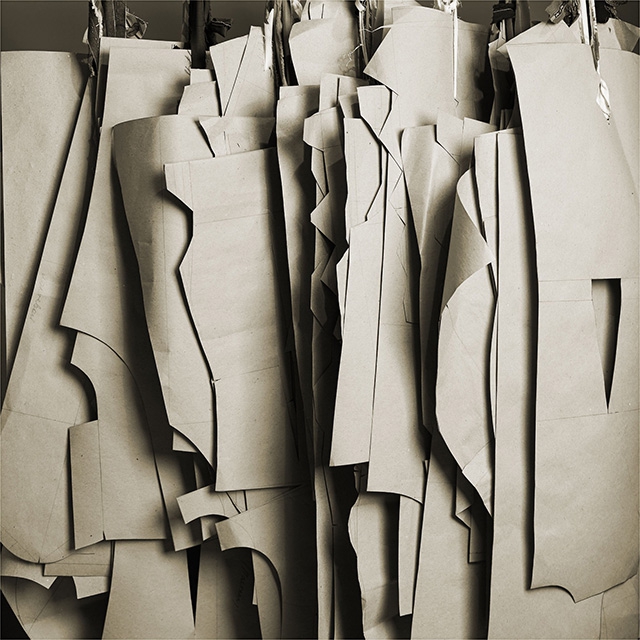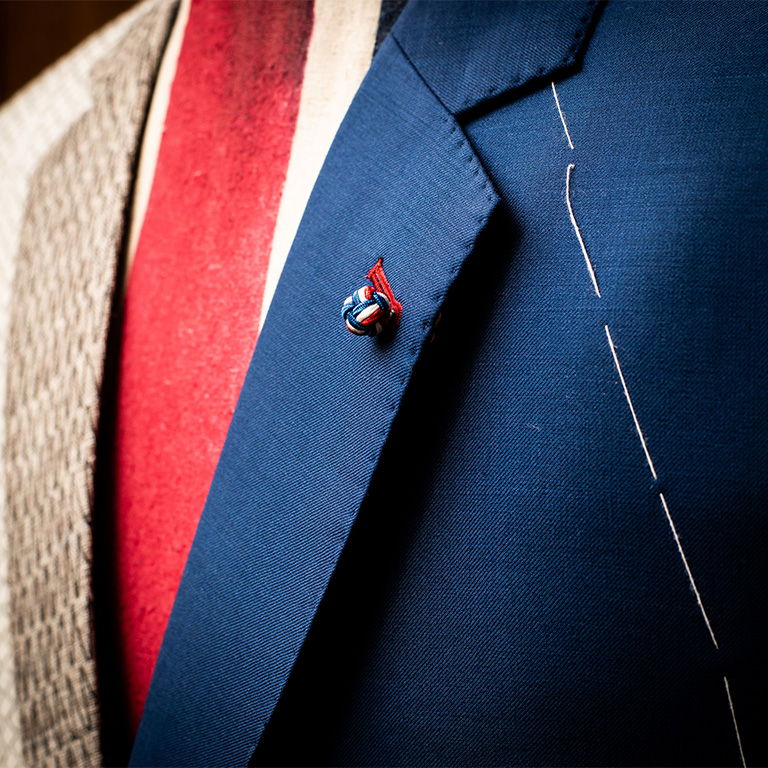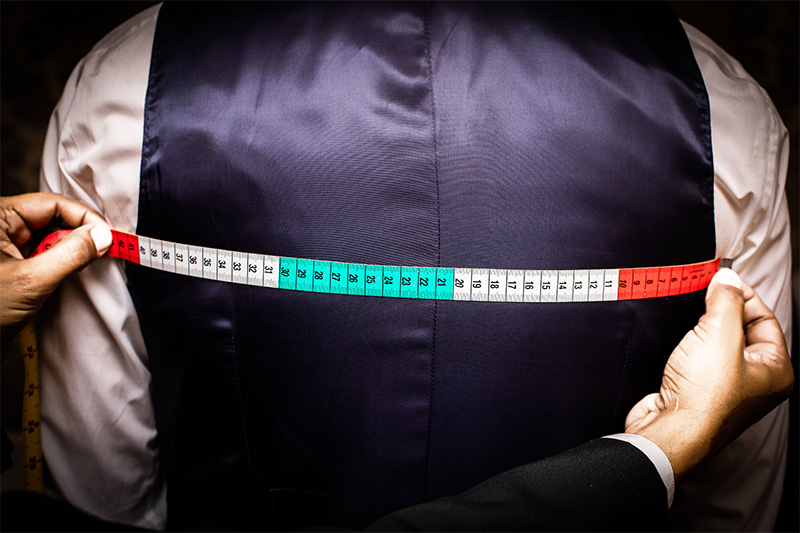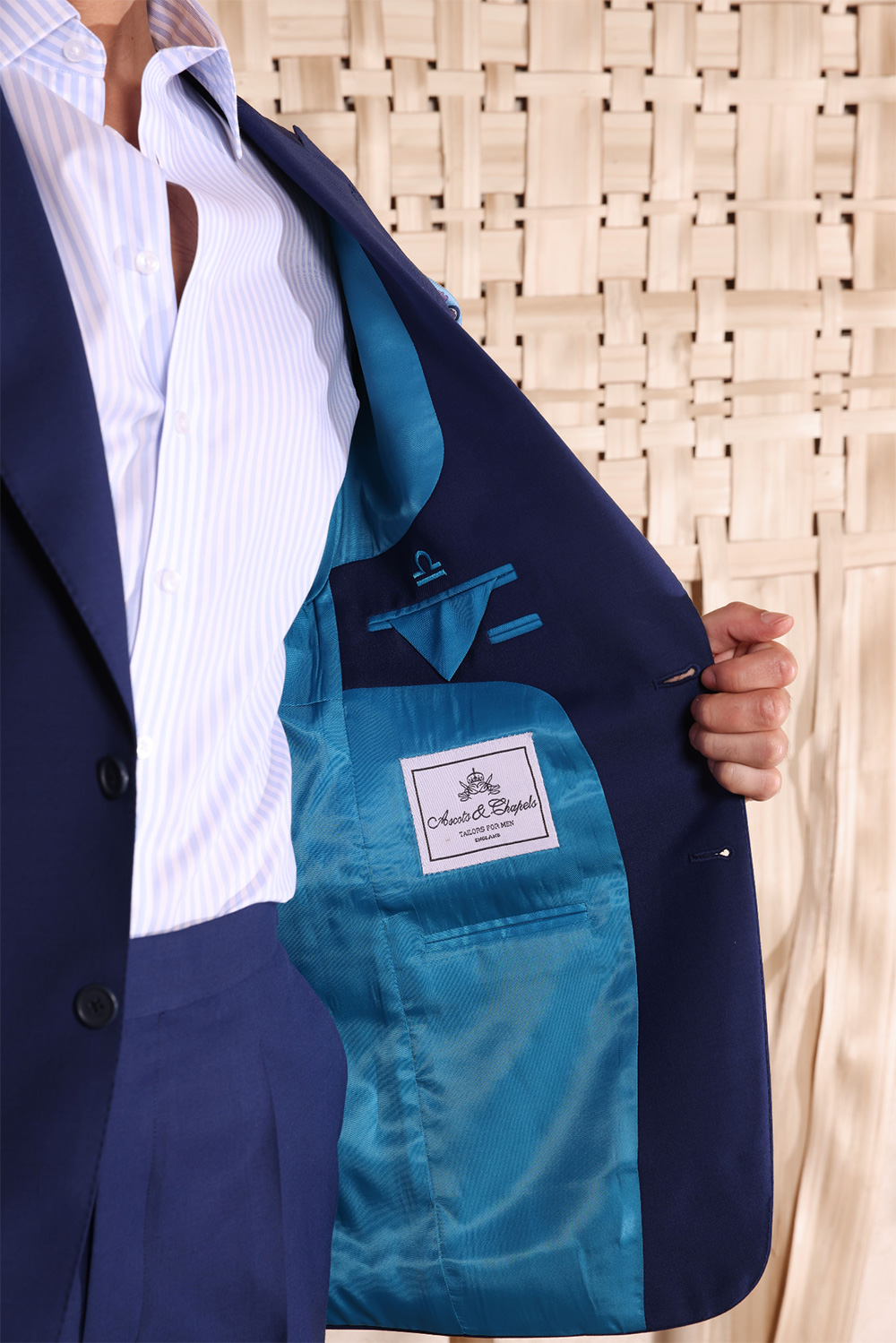
“Style is knowing what suits you, who you are and what you want to say”, Gore Vidal
There comes a point in a man’s life when off-the-peg no longer cuts it. Maybe you could get away with it in your early twenties, when you were keen and green and your dimensions were a little, ahem, ‘slighter’. But for any of us over the age of, say, 21, an off-the-peg suit can look a little ridiculous.
A bespoke suit, au contraire, is the gold standard against which the most ardent sartorialists measure their wardrobe. A properly tailored suit is universally flattering. It’s a time-tolerant piece piece that fits like a second skin.
But getting your hands on a bespoke suit can be a daunting prospect because, well, the world of tailoring is notoriously shrouded in mystique. Not many people know what happens behind its closed doors and too many gents are afraid to find out.
So, chaps, to help encourage you to bid adieu to those too-short jackets and too-tight trousers, we’re going to lift the lid on what happens behind the curtains and tell you exactly what happens at each stage of the process.
First appointment: The initial consultation and measurements

Getting a suit is a deeply personal experience, so we like to conduct this initial consultation in person. This is where we really get to the nitty-gritty details of what you’re looking for in a suit. We’ll ask you a whole string of questions to get an accurate picture of what you need and want in your suit. For instance, what are your priorities? What is it for? Is it for a cocktail party (in which case, it needs some outstanding detail) or day-to-day (where durability is key)? We’ll also need to consider factors like temperature and climate.
This is the bit where we’ll discuss style choices too – single-breasted or double-breasted, buttons, flaps, pockets, pleats, cuffs, lapels – the list goes on. We’ll also explore the cloth books and look at patterns, colour inspiration and trends.
Exciting stuff, eh?
Fear not, you don’t need to go into the consultation knowing exactly what you’re looking for. Our team will be able to help advise on suits that are sympathetic to certain frames, cuts that can illuminate your best features and details that can help hide other bits. But it’s a good idea to have some idea of what you’re looking for.
Then, a bespoke cutter (with years of experience) will take your measurements. We always like to make sure the cutter takes your measurements because then they’ll have a clear picture of you as they analyse your measurements and create the pattern. As well as getting the numbers, they’ll take into consideration all of the peculiarities of your posture and stance as you walk.
Second appointment: First fitting or ‘the basted fitting’

Around one month to six weeks later, you’ll get to see the first draft or blueprint of your suit. This stage is known as the ‘basted fitting’, because the cloth has been hand-cut and loosely tacked, basted together with white basting cloth. It will all look rather unglamorous – it’s really just a skeleton – but it will give you a good idea of whether the suit is headed in the right direction. The cutter will re-confirm your measurements, then pin and chalk the suit for improvements, taking notes and instructing the tailor on how the suit needs to be altered.
We’ll look at the technical fit of the garment and assess the way you walk and stand in it too. At this stage, you’ll also finalise some style choices, such as width lapels, buttons, pockets, lining and cuffs.
Third appointment: Second fitting

Things are about to get even more exciting. At this point, your suit is looking decidedly more suit-like. It might even be almost completely finished, depending on the style and whether your measurements have changed at all. The cutter will assess and scrutinise the alterations carried out by the specialist tailor and make any final adjustments.
Now that your suit feels and looks more like a suit, it’s an excellent opportunity for you to provide some final feedback on fit and feel.
Fourth appointment: Third fitting

The end is nigh! This is likely to be your final fitting, but cutters are perfectionists by nature and won’t rest until the suit is perfect. They’ll assess whether the suit is ready and whether any alterations are required. But if it is… behold the perfect suit!
All in all, the entire process involves around 80-100 hours of manual work by skilled craftsmen.
Final words from Gary
Seems a lot less daunting when you know what to expect, eh? Before we leave you, here’s some sage advice on how to approach each fitting:
- Do your homework: You’re going to be asked a lot of questions – and it’s in your best interest to have a good idea of what your answers will be beforehand. Your character and quirks are literally stitched into your suit, so don’t come clueless.
- Don’t be afraid to ask questions: That said, don’t feel like you need to know Our team is highly specialised and brimming with sartorial knowledge. Make the most of them and really ply them with questions. We welcome interrogation.
- Relax and don’t look in the mirror. When most people look in the mirror, they pull themselves straight like a soldier but your tailor will be looking at your natural stance during measurements.
- Wear the right clothes: We recommend wearing the same (or similar) shoes to those that you’ll be wearing with the suit to all of your fittings. It’s also worth wearing your best or most frequently worn shirt.
- Don’t forget the details: Remember, you have full creative control. This is your chance to create your perfect piece of tailoring. The sartorial world is your oyster.
Ready to get your bespoke suit? Simply pop into your nearest Ascots & Chapels store for a consultation to get going. See you soon gents.
Author: Gary Sweeney
